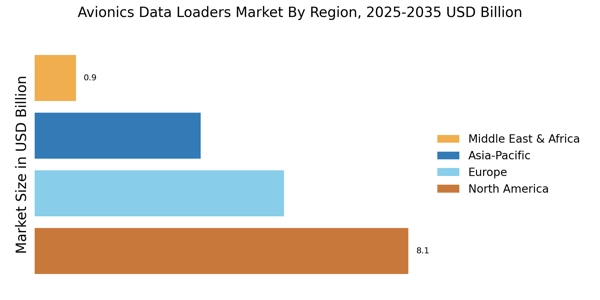Adoption of Automation and AI
The integration of automation and artificial intelligence within the Avionics Data Loaders Market is transforming operational efficiencies. Automated data loaders are capable of performing complex tasks with minimal human intervention, thereby reducing the likelihood of errors and enhancing overall productivity. The trend towards automation is driven by the need for faster data processing and the ability to handle larger volumes of data. As airlines and manufacturers increasingly recognize the benefits of AI-driven solutions, the market for avionics data loaders is anticipated to expand significantly. Projections indicate that the adoption of AI technologies could lead to a market growth rate of around 6% annually, reflecting the industry's shift towards more intelligent and automated systems.
Growing Demand for Enhanced Connectivity
The demand for enhanced connectivity in aviation is a critical driver for the Avionics Data Loaders Market. As aircraft become more reliant on real-time data exchange for navigation, communication, and operational efficiency, the need for robust data loaders that can facilitate this connectivity is paramount. Airlines are increasingly investing in systems that support high-speed data transfer and integration with ground-based systems. This trend is further fueled by the rise of connected aircraft, which require sophisticated data management solutions. Market analysis suggests that the increasing emphasis on connectivity could propel the avionics data loaders market to new heights, with growth rates potentially exceeding 7% in the coming years.
Increased Focus on Safety and Compliance
Safety and compliance are paramount in the aviation industry, and the Avionics Data Loaders Market is no exception. Regulatory bodies are imposing stricter guidelines regarding data management and system updates, necessitating the use of advanced data loaders that ensure compliance with these regulations. This heightened focus on safety is likely to drive demand for avionics data loaders that can provide reliable and secure data transfer. The market is responding to these needs, with a notable increase in the adoption of loaders that feature enhanced security protocols and data integrity checks. As a result, the avionics data loaders market is expected to witness a steady growth trajectory, with an estimated market value reaching several billion dollars by the end of the decade.
Rising Investment in Aircraft Modernization
The Avionics Data Loaders Market is significantly influenced by the rising investment in aircraft modernization initiatives. Airlines and operators are increasingly upgrading their fleets to incorporate the latest avionics technologies, which necessitates the use of advanced data loaders for efficient data management. This modernization trend is driven by the need for improved operational efficiency, reduced maintenance costs, and enhanced safety features. As a result, the market for avionics data loaders is expected to grow in tandem with these modernization efforts. Recent estimates indicate that the global market for avionics systems, including data loaders, could reach upwards of 30 billion dollars by 2030, reflecting the substantial investments being made in this sector.
Technological Advancements in Avionics Data Loaders
The Avionics Data Loaders Market is experiencing a surge in technological advancements, which are pivotal in enhancing the efficiency and functionality of avionics systems. Innovations such as improved data transfer rates and enhanced compatibility with various aircraft systems are becoming increasingly prevalent. The integration of advanced software solutions allows for seamless updates and maintenance, thereby reducing downtime. According to recent data, the avionics sector is projected to grow at a compound annual growth rate of approximately 5.5% over the next five years, driven by these technological improvements. As manufacturers continue to invest in research and development, the capabilities of avionics data loaders are expected to expand, further solidifying their role in modern aviation.


















Leave a Comment